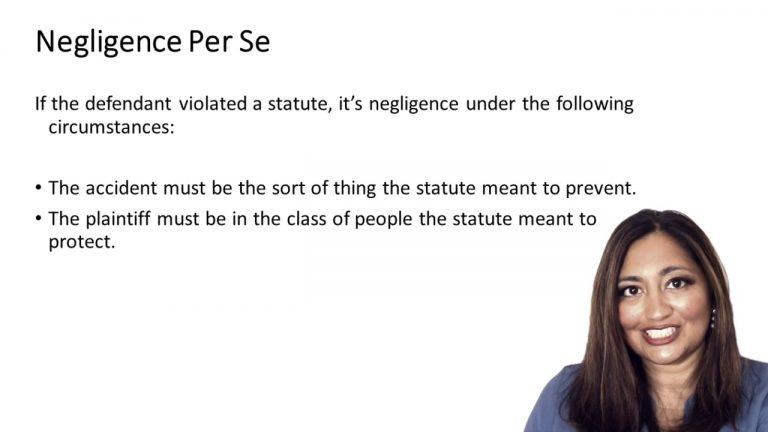SmartBrief
Confirm favorite deletion?
Torts keyed to Best
McCarty v. Pheasant Run, Inc.
Citation:
826 F.2d 1554 (7th Cir. 1987).Facts
McCarty was staying at hotel where she returned after a meeting and dinner. The hotel door was near a staircase with public access, where the attacker apparently entered. After McCarty returned to her hotel, undressed and got ready for bed, she was attacked by a man donning a stocking cap. The man physically beat her and threatened to rape McCarty. She fought him off, as he fled the scene and was not found or identity known by authorities.
Although she suffered minor physical injuries from the incident, McCarty alleged prolonged emotional distress as a result of the attack. She also alleged this emotional distress caused her to retire early from her job.
After an investigation, it was determined the unknown attacker entered the hotel room by prying open the sliding glass door from the outside, breaking the door’s security chain, and remaining in the hotel room until she returned. The room’s sliding glass door was closed but not locked, allowing the man to gain access to the room.
Only StudyBuddy Pro offers the complete Case Brief Anatomy*
Access the most important case brief elements for optimal case understanding.
*Case Brief Anatomy includes: Brief Prologue, Complete Case Brief, Brief Epilogue
- The Brief Prologue provides necessary case brief introductory information and includes:
Topic:
Identifies the topic of law and where this case fits within your course outline.Parties:
Identifies the cast of characters involved in the case.Procedural Posture & History:
Shares the case history with how lower courts have ruled on the matter.Case Key Terms, Acts, Doctrines, etc.:
A case specific Legal Term Dictionary.Case Doctrines, Acts, Statutes, Amendments and Treatises:
Identifies and Defines Legal Authority used in this case.
- The Case Brief is the complete case summarized and authored in the traditional Law School I.R.A.C. format. The Pro case brief includes:
Brief Facts:
A Synopsis of the Facts of the case.Rule of Law:
Identifies the Legal Principle the Court used in deciding the case.Facts:
What are the factual circumstances that gave rise to the civil or criminal case? What is the relationship of the Parties that are involved in the case.Issue(s):
Lists the Questions of Law that are raised by the Facts of the case.Holding:
Shares the Court's answer to the legal questions raised in the issue.Concurring / Dissenting Opinions:
Includes valuable concurring or dissenting opinions and their key points.Reasoning and Analysis:
Identifies the chain of argument(s) which led the judges to rule as they did.
- The Brief Prologue closes the case brief with important forward-looking discussion and includes:
Policy:
Identifies the Policy if any that has been established by the case.Court Direction:
Shares where the Court went from here for this case.

 8m 28s
8m 28s